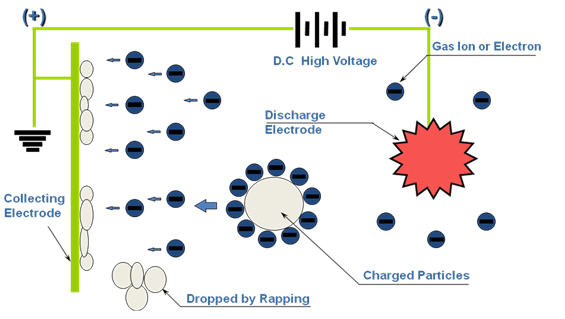Languages
Products
General information ESP
ELECTROSTATIC PRECIPITATORS
An electrostatic precipitator (ESP) is a particle control device that uses electrical forces to move the particles out of the following gas stream and onto collector plates. The particles are given an electric charge by forcing them to pass through a corona, a region in which gaseous ions flow. The electrical field that forces the charged particles to the walls comes from electrodes maintained at high voltage in the center of the flow lane.
Once the particles are collected on the plates, they must be removed from the plates without reentraining them into the gas stream. This is usually accomplished by knocking them loose from the plates, allowing the collected layer of evacuated. Some precipitators remove the particles by intermittent or continuous washing with water.

ADVANTAGES OF ESP
- High removal efficiency (>99,9% achievable)
- Sub-micron dust collection
- Dry or wet environment
- Minimized pressure loss by ESP
- Easy maintenance
- High temperature gas in operation
- Dusts or ashes in acidic gas environment

